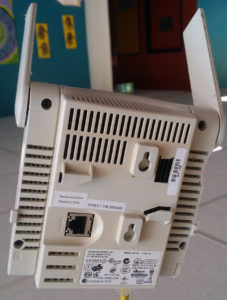
Setting up a bash shell is a lot of fun, there are a lot of ways to configure the bash shell to work just the way you wish it to. Using Linux makes this very easy. The bash shell has a few files that help it perform various functions. The .bash_logout file executes when the user logs out of the session. This can be used to clear the screen on a Virtual Terminal to protect what the user was doing and hide administrator information. This is very important in a busy environment where certain information could be used to gain access to a system. Such as passwords and IP addresses and subnet info. This is why protecting such information is very important. Locking the screen when a user leaves the computer and having strong passwords and other authentication methods to protect user details and company property.
This is the .bash_logout file. This will clear the screen upon logging out.
1 2 3 4 5 6 7 | # ~/.bash_logout: executed by bash(1) when login shell exits. # when leaving the console clear the screen to increase privacy if [ "$SHLVL" = 1 ]; then [ -x /usr/bin/clear_console ] && /usr/bin/clear_console -q fi |
Add these lines to your .bashrc file to modify the behaviour of the bash history.
# don't put duplicate lines or lines starting with space in the history. # See bash(1) for more options HISTCONTROL=ignoreboth # append to the history file, don't overwrite it shopt -s histappend # for setting history length see HISTSIZE and HISTFILESIZE in bash(1) HISTSIZE=1000 HISTFILESIZE=2000 |
This .bashrc content will add a lovely bash shell prompt in color.
1 2 3 4 5 6 7 8 9 10 11 12 13 14 15 16 17 18 19 20 21 22 23 24 25 26 27 28 29 30 31 32 33 34 35 36 37 38 39 40 41 42 43 44 45 | # make less more friendly for non-text input files, see lesspipe(1) #[ -x /usr/bin/lesspipe ] && eval "$(SHELL=/bin/sh lesspipe)" # set variable identifying the chroot you work in (used in the prompt below) if [ -z "${debian_chroot:-}" ] && [ -r /etc/debian_chroot ]; then debian_chroot=$(cat /etc/debian_chroot) fi # set a fancy prompt (non-color, unless we know we "want" color) case "$TERM" in xterm-color) color_prompt=yes;; esac # uncomment for a colored prompt, if the terminal has the capability; turned # off by default to not distract the user: the focus in a terminal window # should be on the output of commands, not on the prompt force_color_prompt=yes if [ -n "$force_color_prompt" ]; then if [ -x /usr/bin/tput ] && tput setaf 1 >&/dev/null; then # We have color support; assume it's compliant with Ecma-48 # (ISO/IEC-6429). (Lack of such support is extremely rare, and such # a case would tend to support setf rather than setaf.) color_prompt=yes else color_prompt= fi fi if [ "$color_prompt" = yes ]; then PS1="\[\033[0;31m\]\342\224\214\342\224\200\$([[ \$? != 0 ]] && echo \"[\[\033[0;31m\]\342\234\227\[\033[0;37m\]]\342\224\200\")[$(if [[ ${EUID} == 0 ]]; then echo '\[\033[01;31m\]root\[\033[01;33m\]@\[\033[01;96m\]\h'; else echo '\[\033[0;39m\]\u\[\033[01;33m\]@\[\033[01;96m\]\h'; fi)\[\033[0;31m\]]\342\224\200[\[\033[0;32m\]\w\[\033[0;31m\]]\n\[\033[0;31m\]\342\224\224\342\224\200\342\224\200\342\225\274 \[\033[0m\]\[\e[01;33m\]\\$\[\e[0m\]" else PS1='┌──[\u@\h]─[\w]\n└──╼ \$ ' fi unset color_prompt force_color_prompt # If this is an xterm set the title to user@host:dir case "$TERM" in xterm*|rxvt*) PS1="\[\033[0;31m\]\342\224\214\342\224\200\$([[ \$? != 0 ]] && echo \"[\[\033[0;31m\]\342\234\227\[\033[0;37m\]]\342\224\200\")[$(if [[ ${EUID} == 0 ]]; then echo '\[\033[01;31m\]root\[\033[01;33m\]@\[\033[01;96m\]\h'; else echo '\[\033[0;39m\]\u\[\033[01;33m\]@\[\033[01;96m\]\h'; fi)\[\033[0;31m\]]\342\224\200[\[\033[0;32m\]\w\[\033[0;31m\]]\n\[\033[0;31m\]\342\224\224\342\224\200\342\224\200\342\225\274 \[\033[0m\]\[\e[01;33m\]\\$\[\e[0m\]" ;; *) ;; esac |
This content will really help you out when setting up a new user on a Linux system. Below is my complete .bashrc file.
Installing a new Linux system is a lot of fun. With Ubuntu 20.04 it is easier than ever and it is fast to boot and very usable for everyone. The MATE desktop is a good choice if you do not like the Gnome Shell environment.
The .bashrc file above requires the fortune-mod package to be installed to get random fortunes.
┌─[jason@jason-desktop]─[~] └──╼ $sudo apt install fortune-mod fortunes-ubuntu-server |
Install the packages above to enjoy a random Linux tip every time you start a terminal. This is very helpful indeed.